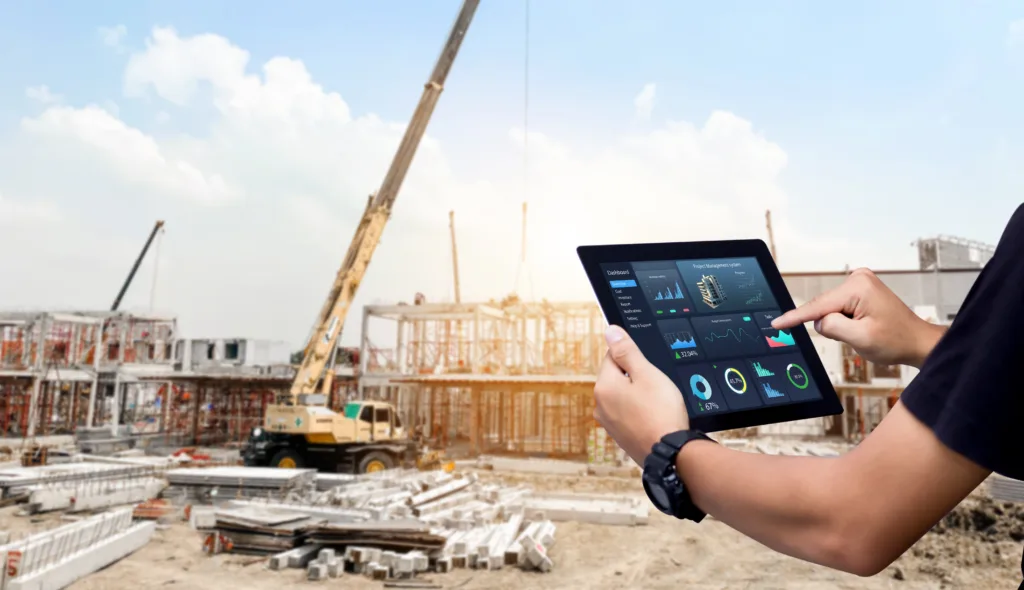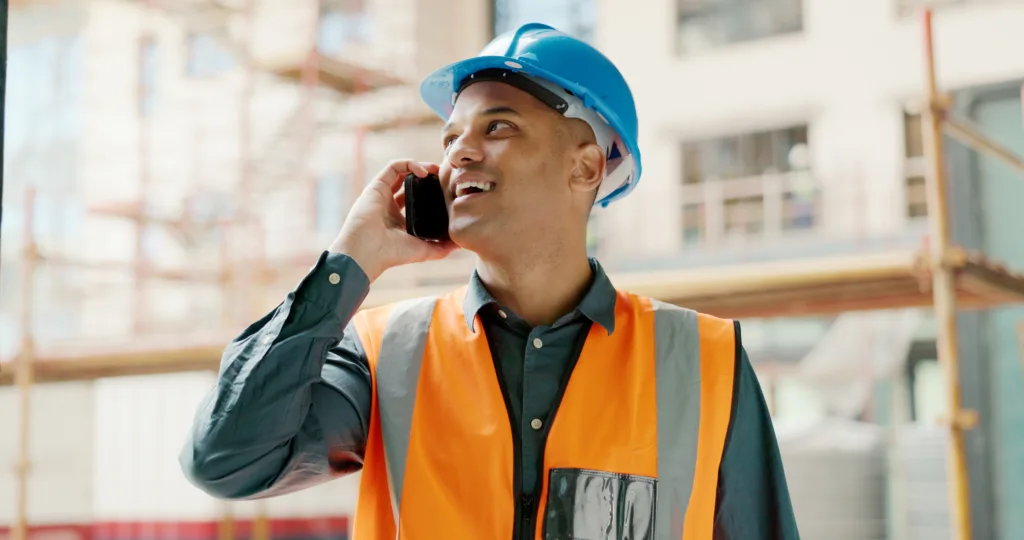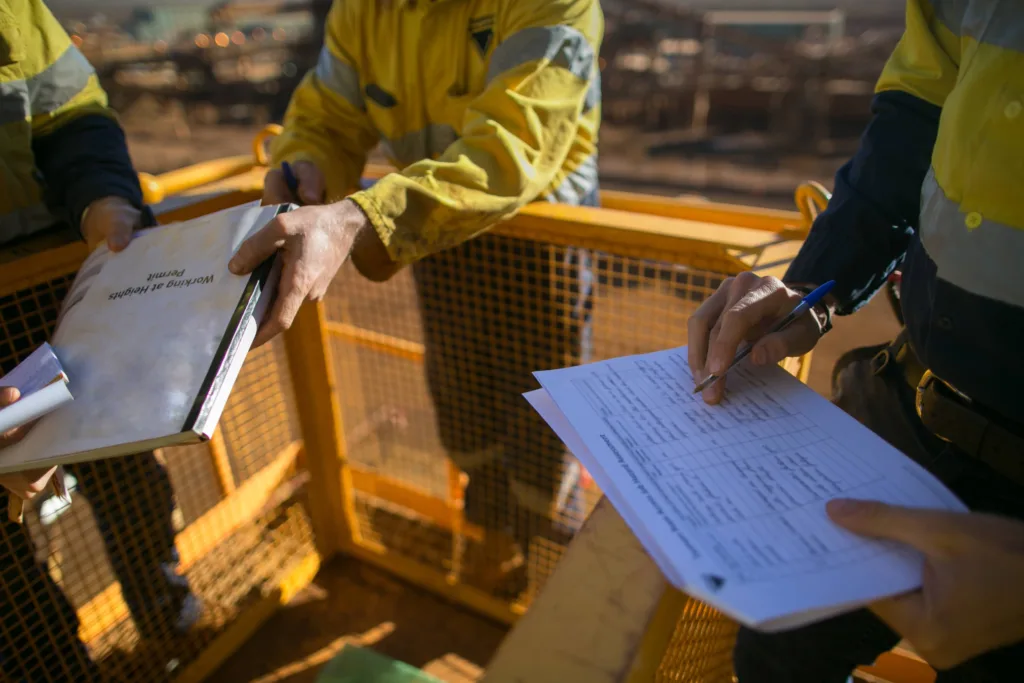In the dynamic world of construction, time and budget are two pillars that support the bridge between an idea and its realization. Whether you’re a seasoned developer, a first-time contractor, or someone invested in a construction project, you’re no stranger to the challenges that arise during the journey. Missteps, after all, not only lead to financial losses but also tarnish reputations, hampering future endeavors. So, how do we ensure that our construction projects remain on track and budget overruns don’t burn a hole in our pockets? The answer, while multifaceted, is simpler than you’d think: effective management strategies.
This article will illuminate ten tried and tested tips that industry leaders swear by, ensuring that projects meet their deadlines and stay within their budgetary confines. From the power of data-driven decisions to the value of regular schedule reviews, these guidelines guide you toward successful project completion. So buckle up, and let’s embark on this insightful journey to delivering construction projects seamlessly.
How to keep construction projects on budget?
Learn the following strategies to keep your projects on budget.
1. Paving the Path with Precise Timelines

Imagine you’re embarking on a cross-country road trip. You’ve got your bags packed, your playlist curated, and a rough idea of your route. But would you leave without a map or a GPS? Probably not. Similarly, in construction, our projects need a definitive path, a clear roadmap. This roadmap is the timeline laid out in your contract.
The value of a detailed contract: It’s easy to dismiss timelines in contracts as mere formalities. However, they are the backbone of clarity and accountability. A well-structured timeline demarcates milestones, roles, and responsibilities, ensuring each stakeholder knows their part and the sequence in which tasks unfold. It acts as a commitment, a handshake agreement between the parties involved, asserting that “this is when and how things will happen.”
Examples of well-defined timelines: Consider the construction of iconic landmarks like the Burj Khalifa or the Channel Tunnel. These monumental projects, laden with complexities, stood tall and functional primarily because of their meticulous planning of construction budgets and unwavering adherence to their timelines. The teams behind such projects understood that deviating from set schedules could lead to logistical nightmares, skyrocketing costs, and missed opportunities.
It’s tempting, especially amid the excitement of a new project, to dive headfirst into the work without ironing out the specifics. However, like our road trip analogy, you wouldn’t want to lose yourself mid-journey. By setting a precise timeline in your contract, you’re not just mapping out the journey ahead of construction project budget but also ensuring that the ride is smooth, efficient, and meets the expectations of everyone involved.
2. Building the Bridge: Connecting the Site to the Office

Picture this: you’re a conductor leading a grand orchestra. The strings, brass, woodwinds, and percussion sections all play in harmony, producing a melodious symphony. But what if the percussion section couldn’t hear the strings? The music would quickly become disjointed, losing its rhythm and charm. The relationship between the site and the office is quite similar in construction. Communication between these two core sections must be seamless and real-time for the project to progress harmoniously.
The need for seamless communication: The construction site is where ideas transform into tangible structures, and the office is where plans are made, resources are allocated, and decisions are taken. A lapse in communication can lead to misunderstandings, mistakes, and missed deadlines. For example, if the office isn’t informed about a delay or issue at the site in real-time, it can cascade into more significant problems, affecting both time and the construction budgeting itself.
Tools and technologies: In today’s digital age, there’s no shortage of methods to keep the site and office intertwined. From dedicated new construction project management apps to simple communication tools like WhatsApp or Zoom, there are myriad ways to ensure everyone remains on the same page. Drones, for instance, can provide real-time aerial visuals of a site to stakeholders sitting miles away. On the other hand, cloud-based platforms allow instant updates, document sharing, and collaborative decision-making, ensuring that they’re mentally and strategically connected even if the team is physically apart.
It’s crucial to remember that while construction projects are inherently physical undertakings, they’re also profoundly collaborative. By bridging the gap between the field and the office, you’re ensuring that everyone has a clear view of the project’s progress and fostering a spirit of unity, collaboration, and shared purpose. After all, like our orchestra, every individual’s contribution is vital for the collective symphony of success.
3. The Digital Edge: Choosing the Right Tools

Have you ever tried fixing a leaky faucet with a hammer? Or baking a cake without an oven? Just as specific tasks require appropriate tools, or alternative materials, so does the construction industry. Especially in this digital age, where the line between brick-and-mortar endeavors and online processes is blurring, the right digital tools can differentiate between a successful project and one riddled with inefficiencies.
Rise of digital tools: Think back to a decade or two ago. Blueprints were enormous sheets of paper, and communication across sites depended on landlines or tedious meetings. Today, however, a contractor might check a digital layout on a tablet, mark out corrections, and send it to the architect within minutes, all while standing on the project site. This leap in efficiency is all thanks to the rise of dedicated digital tools tailored for the construction world.
Factors to consider: With a sea of apps and software, how does one pick the right tool? First, consider the specific needs of your project. Is it a sprawling residential complex or a boutique store? Different projects have varied demands. Next, think about user-friendliness. No matter how advanced a tool is pointless if your team can’t navigate it. Budget, of course, plays a role too, but always weigh the cost against the long-term benefits and efficiencies the tool offers.
Training and customer support are other often overlooked aspects. You’d want to choose a tool with robust support, ensuring any hiccups are promptly addressed. And finally, scalability is key. As your projects grow in complexity and size, can the tool adapt?
It’s easy to be dazzled by fancy features and sleek interfaces. But remember, the best tool is one that integrates seamlessly into your workflow, bridges gaps and makes the construction process more streamlined and efficient. Essentially, it’s not about having the most tools but the right ones. Because, at the end of the day, a toolkit bursting at the seams won’t help if it doesn’t contain the specific wrench you need.
4. Guided by Figures: The Power of Data

Remember the age-old adage, “Knowledge is power”? This wisdom in the contemporary construction landscape translates to: “Data is power.” If you’ve ever been caught in a rainstorm without an umbrella because you skipped the weather forecast, you’ve experienced the consequences of disregarding available data. In construction, not leveraging data can lead to far more than just getting wet; it can cause financial overruns, delays, and even safety hazards.
Benefits of data-driven decisions: At its core, data offers clarity. It’s like having a crystal ball that provides concrete insights based on past actions and current situations instead of vague predictions. Need to forecast material requirements for the next phase? Data can help. Want to analyze which tasks tend to lag most often and why? Again, data to the rescue. By relying on data, construction professionals can predict problems before they arise, allocate resources more efficiently, and ultimately drive projects toward timely and on-budget completion.
Methods to gather and analyze: But where does one begin? Firstly, embrace digital tools, many of which are designed to collect data automatically, be it labor hours, material consumption, or the project’s financial stability and progress. Regular site audits and feedback loops with teams also generate valuable data points. Once you have the data, analysis tools, ranging from specialized construction software to general-purpose platforms like Excel, can help draw actionable insights. Advanced users might even delve into predictive analytics, using historical data to foretell future trends and challenges.
However, a word of caution: while data is compelling, it’s vital to ensure its accuracy. Erroneous data can lead to misguided decisions. Regular checks and a culture of meticulous record-keeping go a long way in maintaining data integrity.
In the grand construction ballet, think of data as your choreographer, guiding each step and move to ensure a flawless final performance. By harnessing the power of data, construction professionals are not just building structures; they’re crafting future-ready, optimized, and efficient masterpieces.
5. Stay on Track: Regular Schedule Reviews

Do you recall those childhood memories of building with blocks or assembling puzzles? The thrill of each piece fitting perfectly was often punctuated by moments of reassessment, especially when something didn’t seem right. You’d pause, evaluate, and, if necessary, recalibrate. This iterative approach wasn’t just child’s play; it’s a lesson in the value of regular checks and adjustments. This translates to the importance of consistent schedule reviews in the grown-up construction world.
The Why Behind Reviews: Construction projects are intricate beasts, constantly evolving with every brick laid and every nail hammered. What seemed like a straightforward task last week might have hit a snag due to unforeseen circumstances. Maybe a shipment of materials got delayed, or unexpected weather conditions slowed progress. Without regular check-ins, these minor hiccups can snowball into significant delays, throwing off your timeline and budget.
The How of Effective Reviews: An effective schedule review is more than just a cursory glance at dates and milestones. It’s an in-depth analysis. Start by comparing actual progress to planned progress. Where are the discrepancies? Why did they occur? How can they be rectified? Encourage open dialogue during these reviews. The on-site team may have feedback that hasn’t reached the higher-ups. Perhaps there’s a recurring challenge that, if addressed, could speed up subsequent tasks.
Equally important is the frequency of these reviews. While significant projects might benefit from weekly check-ins, smaller undertakings could opt for bi-weekly or monthly reviews. The key is consistency. Regular reviews keep everyone aligned and foster a culture of accountability and proactive problem-solving.
Lastly, remember to document these reviews. Maintaining a record helps track recurring challenges, assess how past decisions impacted progress, and serve as a valuable tool for future projects.
Just as a sailor regularly checks the stars to ensure he’s on the course, regular schedule reviews guide construction projects toward their intended destination. They ensure that the journey, while adventurous, stays within the plotted course, providing a timely and budget-conscious arrival.
6. A Watchful Eye: Embracing Field Reporting

Have you ever played the game of “Telephone” at a party? You whisper a message to the person next to you, and they pass it on until it reaches the last person. More often than not, the final note is a hilariously garbled version of the original. While this might be fun at a gathering, distorted or delayed communication can lead to real problems in construction. That’s where field reporting, the unsung hero of construction management, steps into the spotlight.
Why Field Reporting is Vital: Field reporting is the on-site team’s way of directly communicating the ground realities. It’s the eyes and ears of a project, capturing everything from daily progress and resource utilization to potential issues and safety concerns. Without regular field reports, the decision-makers, often tucked away in offices, might base their choices on outdated or incomplete information. Think of it as navigating a maze with only half the map; it’s frustrating and inefficient.
Getting it Right: Effective field reporting combines consistency, clarity, and detail. Reports must be timely, so daily reports are often the gold standard, especially for larger projects. They should be clear, cutting through jargon to deliver concise information. And while brevity is essential, so is detail. It’s a balancing act. For instance, instead of merely stating, “Work was delayed,” a report might specify, “Work was delayed due to a broken excavator.”
Modern technology offers a plethora of tools to simplify and enhance field reporting. From apps that allow on-site teams to input data in real-time, complete with photos and annotations, to platforms that automatically collate and distribute these reports to stakeholders, embracing digital solutions can elevate the quality and impact of field reports.
But beyond tools and tactics, effective field reporting also hinges on fostering a culture of open communication. Teams should feel empowered to report issues, knowing their insights are valued and will lead to constructive action rather than blame.
In the vast narrative of a construction project, field reports are the daily diary entries that capture the story as it unfolds. They ensure that everyone, from laborers to leaders, stays informed, aligned, and ready to tackle challenges, keeping the project marching toward its grand finale.
7. Clear & Crisp: Keep Your Updates Short & Relevant

Imagine being handed a 500-page book when all you asked for was a summary of its plot. Overwhelming, right? Similarly, in the bustling construction world, where every second counts, verbose updates can be both tiresome and counterproductive. In an industry where clarity can mean the difference between a successful day and a series of missteps, the essence of communication lies in being concise yet comprehensive.
Why Brevity Matters: Time is a precious commodity on any construction site. Prolonged meetings or exhaustive reports can interrupt productive hours, delaying tasks and potentially throwing off schedules. More importantly, when bombarded with heaps of information, the critical points might get lost, leading to misinterpretations or overlooked details.
Striking the Right Balance: Being brief doesn’t mean skimming on essential details. It’s about discerning what’s crucial for the recipient to know. For example, the project manager might benefit from knowing that a task is delayed due to equipment malfunction but may not need an in-depth analysis of why that equipment failed. That level of detail might be more relevant for the maintenance team.
Here are a few pointers to keep communication brief yet substantial:
- Prioritize Information: Start with the most vital details, ensuring they’re front and center.
- Use Bullet Points: They are easier to skim through and absorb, especially for updates containing multiple information pieces.
- Leverage Visual Aids: Sometimes, a simple graph, chart, or photograph can convey what might take paragraphs to explain.
- Avoid Jargon: It’s best to keep the language simple and straightforward unless you’re sure the recipient understands industry-specific terms.
- Feedback Loop: Encourage recipients to ask questions if anything is unclear. This ensures everyone’s on the same page and provides insight into how you can refine future communications.
Remember French philosopher Blaise Pascal’s wise words: “I would have written a shorter letter, but I did not have the time.” Keeping updates concise requires a clear understanding of the project’s intricacies and the needs of its stakeholders. But when done right, it facilitates smoother operations, fostering an environment where everyone is informed, aligned, and ready to take on the day’s challenges.
8. Knowledge is Power: Investing in Training

Close your eyes briefly and imagine giving a child a toolbox without guidance. The child, overwhelmed by the unfamiliar tools, might misuse them or hurt themselves. In many ways, the construction world isn’t all that different. Equipping your team with the latest tools and technologies is commendable, but they’re just instruments collecting dust without proper training. Investing in training isn’t just a good-to-have; it’s a cornerstone of delivering projects on time and budget.
Why Training Matters: Construction, by its nature, is dynamic. New technologies emerge standards evolve, and best practices are constantly refined. If teams aren’t trained to keep pace with these shifts, the result is inefficiency, mistakes, and delays. Moreover, well-trained individuals work faster and safer, reducing the likelihood of accidents and associated setbacks.
Getting the Most Out of Training: Recognizing the value of training is one thing, but how do you ensure your investment yields the desired results?
- Tailored Programs: Not all roles require the same training. While site workers might benefit from hands-on equipment training, project managers might need courses in the latest construction project management software. Understand the unique needs of each role and customize training accordingly.
- Blended Learning: Everyone learns differently. Some prefer traditional classroom settings, while others could benefit from online modules or hands-on workshops. A mix of different training methodologies often works best.
- Regular Refreshers: One-off training sessions are seldom enough. Regular refresher courses ensure that skills remain sharp and that any new updates or changes are integrated.
- Feedback is Key: Post-training, gather feedback. What did participants find most useful? What could be improved? This feedback loop is invaluable for refining future training sessions.
- Celebrate Learning: Create a culture where continuous learning is celebrated. Recognize and reward those who excel in training programs, fostering an environment where upskilling is encouraged and applauded.
Training is the bridge between having resources and maximizing their potential. It’s the driving force that ensures every tool, software, and piece of equipment is utilized to its fullest, ensuring projects stay on track and exemplify industry standards of excellence.
9. Assemble the A-Team: Hiring Right

Picture this: you’re watching a movie where a team of diverse experts comes together, each bringing a unique skill to the table, collaborating seamlessly to achieve a seemingly impossible task. It sounds like a blockbuster heist film, doesn’t it? But, in many ways, a successful construction project is not all that different. Instead of jewels or vaults, the prize is a completed project delivered on time and within the project budget itself. And the key? It all hinges on assembling the right team.
The Power of the Right People: No tool, technology, or strategy can replace the value of a competent, motivated workforce. Each member, from the architect to the laborer, plays a critical role. The right team can anticipate problems, adapt to challenges, and drive efficiency at every phase.
Navigating the Hiring Maze: With countless potential candidates out there, how can you ensure you’re bringing the best on board?
- Skills Over Resumes: While impressive credentials can be enticing, prioritize hands-on skills and experience. A candidate with on-ground experience might offer more practical insights than someone with a stack of certificates.
- Cultural Fit: Skills are critical, but so is the ability to meld with your company’s culture. A candidate who shares your values and vision is more likely to be committed and engaged.
- Adaptability is Key: In the ever-evolving construction landscape, the ability to learn and adapt is priceless. Seek out individuals who are eager to learn and aren’t rigid in their methodologies.
- Diverse Perspectives: A team with varied backgrounds and experiences can offer many innovative solutions. Embrace diversity, not just in terms of demographics but also in skills and expertise.
- Trust Your Instincts: Sometimes, the intangible “gut feeling” can be just as crucial as tangible qualifications. If someone feels like the right fit, they probably are.
Once you’ve assembled your team, invest in their growth. As mentioned earlier, training is invaluable. Moreover, cultivate an environment where open communication is encouraged and each member feels valued. When individuals believe in the project’s vision and their role in it, magic happens.
In the grand screenplay of construction, every member is a star with a pivotal role to play. And just as casting can make or break a film, hiring can profoundly impact the success of a construction project’s budget. So, roll out the auditions, seek out the superstars, and get ready for a blockbuster delivery!
10. Expect the Unexpected: Robust Risk Management

Ever been on a road trip where, when you think you’re cruising smoothly, an unexpected detour throws everything off course? The journey of construction is similar. No matter how meticulous your project planning is, unexpected hiccups – from sudden weather changes to supply shortages – can and often do crop up. While we can’t predict every twist and turn, with a robust risk management strategy, we can be prepared to tackle them head-on.
The Reality of Risks: Risks in construction aren’t merely potential problems; they’re often inevitable. The variables are many: volatile material prices, evolving labor laws, unforeseen site conditions, and more. Recognizing that risks are a part of the journey rather than anomalies is the first step toward effective construction budget management.
Crafting Your Risk Management Strategy: How can one anticipate the unexpected and navigate these challenges?
- Risk Assessment: Start by identifying potential risks. Engage stakeholders from various departments, as collective insights can help you spot hazards that a more narrow viewpoint might overlook.
- Prioritize: Not all risks are created equal. Some might cause minor delays, while others could jeopardize the entire project. Assign a “weight” to each risk based on its potential impact and likelihood of occurrence.
- Plan of Action: For each significant risk identified, devise a mitigation strategy. This could range from maintaining backup suppliers for potential material shortages to investing in weather-resistant equipment for outdoor projects.
- Monitor Relentlessly: Risks aren’t static. As the project progresses, new risks might emerge, while old ones might evolve or fade away. Maintain a dynamic risk register and review it regularly.
- Communication is King: Ensure everyone, from on-site workers to top-tier management, knows potential risks and the corresponding response strategies. When everyone is informed, the collective response is faster and more effective.
- Learn and Adapt: Once a project concludes, review the risks encountered, the effectiveness of your strategies, and any lessons learned. This retrospective can be a goldmine for refining risk management in future projects.
In the construction saga, risks are the plot twists that keep the story interesting, challenging, and authentic. While they might add a layer of complexity, with a robust risk management approach, they can be transformed from potential setbacks into opportunities for growth, learning, and innovation.
Conclusion
As we pull into the final stop of our construction journey, it’s worth pausing and reflecting on the landscape we’ve navigated. From charting precise timelines and harnessing the might of digital tools to assembling a stellar team and expecting the unexpected, the path to delivering construction projects on time and budget is paved with diverse strategies, each as crucial as the next.
But, if there’s a single thread that weaves through all these tenets, it’s this: proactive preparation. Whether staying a step ahead with training or bracing for unforeseen risks, success in the construction industry lies in foreseeing challenges and readying ourselves to tackle them.
Construction is filled with challenges and triumphs, unexpected turns, and straight roads like any epic tale. But with the right tools, team, and tenacity, the result can be a masterpiece.
So, as you pick up your hard hat and blueprint, remember every building that stands tall against the skyline started as an idea nurtured by dedication, expertise, and the right strategies. Here’s to building structures and legacies that stand the test of time.
Optimizing Construction Budget Management with Bauwise Software
For construction companies looking to prevent cost overruns and ensure effective budget management, Bauwise budget management software offers a comprehensive solution. By centralizing control of project costs and keeping construction projects tightly within the project’s scope, Bauwise helps firms maintain financial discipline throughout the lifecycle of each project. The software is specifically designed to enhance construction budget management practices, providing real-time insights into financial performance and enabling proactive adjustments. With Bauwise, construction companies can ensure that every dollar is accounted for, reducing the risk of budgetary excesses and aligning spending with strategic objectives.
About the Author

Taavi Kaiv
Taavi Kaiv is a construction specialist with over ten years of experience in the construction industry. Taavi is an accomplished construction project manager with many successful projects that have been completed under his guidance. Taavi holds a master’s degree in construction management from the Tallinn University of Technology. View profile






